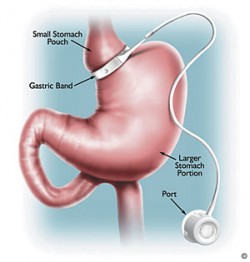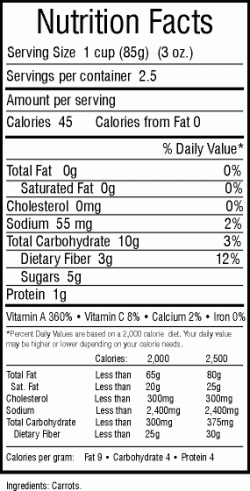How to Lose Weight in Wrestling
Wrestlers may attempt to lose weight in order to qualify for a lower weight class in which they may become more competitive. There are safe ways to engage in weight loss that will make a wrestler more fit and stronger. There are also practices to avoid that can be harmful. While standard ways of losing weight are good guidelines, keep in mind wrestling requires more physicality and athleticism than regular routines. Finding the right combination of diet and exercise is important. You want to plan your weight loss over time and not attempt rapid weight loss techniques that can harm your health and leave you ill equipped to compete.[1][2]
Steps
Part 1 Starting With a Healthy Diet
-
1
Start dieting early. You need to manage your weight loss you drop no more than 2-3 pounds per week. More than 2-3 pounds of weight loss risks damage to your health and loss of performance.[3][4][5]
- Creating a schedule will be addressed in a later step, but think about this from the beginning.
- You should talk about any significant diet changes with your doctor.
-
2
Drink plenty of water. You don't want to get dehydrated during a match. Trying to cast off weight by removing water from your body is a major mistake athletes can make during this process.[6][7][8]
- When you do workouts, try to take in water at 10-15 minute intervals.
- During the day, you should drink a glass of water (approximately 8 ounces) 3-4 times.
- Avoid drinking too many caffeinated beverages like soda and coffee. These drain water out of your body faster through urination.
- Stay alert for symptoms of dehydration including if you are noticing signs of confusion, dizziness, feel lightheaded, have dry mouth, cannot make tears, and/or have unusually dry skin.
-
3
Eat foods lower in fat, but maintain the calories you need. Any athletic event you participate in requires a high calorie count for you to perform. Trimming fat while at least maintaining a reasonable amount of calories can help you lose weight and not sacrifice energy.[9][10][11][12][13][14]
- High-school/college-aged wrestlers need a minimum of 1,000-2,500 calories per day plus at least 1,000 more calories for workouts.
- These will be foods that are high in carbohydrates, low in fat, and that help you lose weight at a rate of at most 2-3 pounds per week.
- Don't try to lose more than 2-3 pounds per week. More than this will result in muscle loss, malnutrition, dehydration, and body chemistry imbalances which will hurt your health and performance.
- Schedule three regular meals per day, and ideally allow yourself one snack. Make sure you're eating 3-4 hours before your matches.
- Wrestlers need approximately 1-1.5 grams of protein for 1 kilogram of body weight. This equates to roughly 68-102 grams for a 150 pound individual.
-
4
Eat a high-carbohydrate breakfast to start the day. This will give you energy for your morning workout routine(s) without excess sugar or fat.[15]
- A sample breakfast of this kind might be 2 cups of whole-grain cereal (sugar-free), 1 cup low-fat milk, 1 large banana, 1 slice whole-wheat toast (w/ 2 teaspoons of peanut butter), and 1 cup of orange juice.
- This breakfast should contain approximately 685 calories.
-
5
Consume a balanced lunch at a regular time each day. For this wrestling weight-loss regimen, you want a good selection of fruits and vegetables with the meal.[16]
- Lunch may include a whole-wheat pita sandwich stuffed with 3 ounces lean turkey, 1 ounce of low-fat cheese stuffed, with mustard, lettuce and tomato. You can have as sides 1 cup nonfat yogurt, an apple, and 1 cup of mixed greens with 2 tablespoons of low-fat dressing.
- This lunch should contain approximately 600 calories.
-
6
Eat a full dinner. Dinner during this diet needs to fill you up, probably a few hours after a match or practice, and help rebuild muscle and nutrients.[17]
- A wrestling weight-loss dinner could include a shrimp stir-fry with 4 ounces of shrimp, 2 cups of mixed vegetables with 2 teaspoons of vegetable oil and low-sodium soy sauce, and a side of 1 cup of brown rice.
- Such a dinner should contain approximately 570 calories.
-
7
Take a snack break. Snacks, unlike the meals, should be eaten within 30 minutes of the wrestling practice or meet. This will also help with muscle growth and repair.[18]
- Any snack should combine carbohydrates, protein, and fat.
- Limit snacks to 100-200 calories.
- A sample snack could be 1 cup of cereal (unsweetened) with 1 cup low-fat milk, 10 crackers (whole-grain, topped with 1 ounce of low-fat cheese), or 1.5 cups of low-fat chocolate milk.
-
8
Keep extra healthy snacks with you. If you find yourself tending to over-indulge during sit down meals, you can mitigate this some by keeping healthy alternatives to eat during the day.[19]
- These need to be fruits, or high carb/low fat foods.
- If you are making purchases for snacks, go for the fruit and pretzels, not the chips or candy.
-
9
Create a diet list and schedule. This is a way for you to remind yourself of the time you have to make your weight loss goal, and the foods you need to gather and/or avoid.
- Remember, you need to lose no more than 2-3 pounds per week or you risk making yourself unhealthy and unfit to perform.
- Match your calendar to your wrestling schedule, and count backwards the number of weeks you have to make your weight goal. Make particular note of weigh-in dates.
- Factor how many weeks it will take you to reach your goal at the 2-3 pound per week interval, and if you can reasonably make it. Do not force yourself past this rate of weight loss. simply to make a much lower weight class.
- Do you have the kinds of foods you need around, or do you need to do significant grocery shopping? If you live with others, you might ask them to help you by avoiding putting the foods you need to avoid in easy to reach places--you might even ask them to swap the healthier foods in for some unhealthy options they are used to storing.
-
10
Consult your doctor. Any significant diet changes can be enhanced by running the ideas by a medical expert who can point out deficiencies you might be suffering or advantages you can pursue.[20][21][22][23]
- If you need to lose weight quickly, perhaps a couple of pounds within the next 24-48 hours, you can ask your doctor if there is any safe way to do this through a modified diet and cardio-vascular exercise. A medical professional is the only one you should consult for this. Crash diets, laxatives, sauna suits, and other cutting techniques can be hazardous to your health and leave you too weak to perform--avoid these methods.
- Consider a reasonable amount of cardio-vascular exercise, thirty minutes up to one hour of running or biking. You don't want to exhaust yourself, use up all your stored nutrients for the match or practice, and/or risk physical injury before competition.
- Your doctor may be able to recommend more specific foods, diet schedules, and vitamins to target for your regimen. During your consultation, you might ask something such as, "I weigh ____ pounds now. I am preparing for a wrestling weigh-in and match in four weeks, what changes to my calorie in take do I need to make the next lower weight class at ___ pounds?"
- Some foods and beverages for the diet period might include various combinations of quinoa, black beans, oats, avocados, salmon, blueberries, bananas, broccoli, rice, pears, oranges, grapefruit, nuts, green tea, eggs, dark chocolate, potatoes, and/or cheese
- These foods can mixed in ways that will leave you feeling full with small servings to help drop a tiny amount of weight, but not cut out nutrients or carbohydrates you will need for competition later. You do not want to lose muscle mass and/or energy.
Part 2 Adjusting Your Workout
-
1
Go to the gym. Maintain your gym exercises. You don't want to lose the strength training regimen you already have.[24][25]
- You want to be in shape for performance at your gym meets and practices, so keeping up your workouts is essential.
- Keeping up the same and/or adding workouts while cutting your fats and overall calories (remember, you're not cutting too many), will help reduce your weight gradually.
- Wrestling workouts focus on speed and power as with many athletic competitions.
- Core exercises for power include push-ups, pull-ups, squats, dead-lifts, shoulder presses, sit-ups, bench presses.
- The weight-bearing exercises can be done with fewer repetitions and heavier weight to build power.
- For lower weights, use more repetitions to build endurance and conditioning.
- For exercises that use only your body-weight (like the pull-ups and push-ups), use as many repetitions as possible to build endurance.
-
2
Add creative training methods. There are some occupational methods you may consider.[26][27][28]
- These can include non-standard weights and motions like rope climbing, rowing, twists, tire flipping, medicine ball tossing.
- A sample work out might be 6 pull-ups, 10 push-ups, 10 squats, 8 tire flips, 15 barbell shrugs, another set of pull-ups.
-
3
Get a trainer. You might want professional assistance if you don't already have it.
- If you are already on a wrestling team, this discussion is best had with your coach and/or team trainer. You might open the talk by mentioning you want to wrestle in a different weight class, and want to adjust your workout routine along with any other changes you are making such as diet. They may guide you personally or recommend a particular trainer at a gym.
- If you are already doing these workouts at a gym, or are about the start them, talk to the gym's staff about the availability of trainers to help you set up a workout routine for your goals. Perhaps ask, "I want to reach a certain weight level for a wrestling meet, I would trainer assistance on my exercise regiment."
-
4
Give yourself a break. Take time to rest from your exercises during workouts and in between.[29]
- You need recovery time from workouts so muscles can heal, rebuild, and get stronger.
- Include cool-down periods for daily workouts. This means gradual reduction of the workout until includes--such as slowing your run to a walk in the minutes before it ends. Don't work out again for several hours.
- Build in a day or two for recovery per week to allow your muscles time to replenish energy, fluids, rebuild tissue.
- If you are using a personal trainer, they can build in intense workout periods along with rest days to maximize your strength training with your recovery time.
-
5
Match your workout to your diet changes. This includes making sure your schedule to meet your new weight-loss goal is achievable.[30][31][32][33]
- You need to match your caloric intake to your workouts. Just like wrestling matches, workouts require energy and burn calories.
- Make sure you are eating according to the previous steps before and after workouts. This means meals high in carbohydrates and proteins, but low in fat.
- Keep an eye on your daily schedule so you won't have any major disruptions in your time at the gym or ability to get proper meals before and after workouts. Having this schedule in mind will allow you to anticipate interruptions and work around them to improve the chances you will meet your weight loss goal without losing performance quality at the match.
Part 3 Supplementing Your Diet and Exercise
-
1
Drink protein shakes. These are either ready-to drink mixtures or powders that need to be stirred in water, milk, or juice.[34][35]
- These should not be used as meal replacements or you risk losing too many other nutrients you will need to build strength.
- Typically, these shakes are composed of some combination of milk, whey, casein, egg, soy, and/or rice.
- Whatever product you select should have 50-100 percent protein product or it may unnecessarily add weight.
- Make sure to drink these after each workout. If you have a trainer, let them know you are using these. You might want to consult your doctor as well to make sure this is safe for you.
- These shakes are usually dairy based, so keep that in mind in case tolerance for such products is or becomes an issue.
-
2
Get plenty of sleep. Maintaining a healthy sleep cycle is good for your overall health as well as managing your eating and workout routines.[36][37]
- The standard recommendation of 7-8 hours of sleep per night should work for you.
- This applies even more so to times before wrestling practices and meets. You want to be well rested for optimum performance.
- As with diet and exercise, if you live with others, let them know you are on a schedule and enlist their cooperation if possible in ensuring you are not disturbed at night.
- Integrate your sleep cycle with your other routines so your dinner, snacking, breakfast, and workout routines fit in without rushing you from one to the other and leave you some buffer time in case of other events.
-
3
Go outside for workouts. You don't need to stay in the gym all day for strength training. When you're mixing up your routine, consider some outdoor activities.[38]
- "Fireman" carries, sledgehammer swings, and track and field activities can improve your strength, agility, and endurance.
- You want to maintain routines for the most part to keep up schedules, confidence, and consistency in performance. But a change of routine on occasion will improve your interest in the workouts, and expand your body's ability to react to different situations.
-
4
Eat power bars. These are snack sized bars usually a mix of some candy flavoring (such as chocolate), protein, carbohydrates, and some fat. They are usually between 100 and 200 calories.[39][40]
- An instance where you might use one of these is you are about to head into wrestling practice or a match and you suddenly feel low on energy, but cannot have a full meal.
- You should consider trying these before some of your practices or workouts early to see how they will affect you.
- Eat these before workouts (not afterwards like protein shakes).
- These are available as commercially sold bars in a wide variety of flavors, and there are some homemade recipes.
-
What Celebrity Chefs Dont Want You To Know
Its easy to get suckered into thinking that celebrity chef creations a
-
Lifestyle Changes and Weight Loss
Yesterday I wrote a post about the 15 or so lifestyle changes th
-
The Importance Of A Weight Loss Diary
Losing weight the natural way such as exercising and eating a balance
-
Two Part Plan to Weight Loss
These days, how you look is often more important than how talent
-
I Lost 70 Pounds And I Finally Feel Alive Again
Eight months ago, Stacy Larson, 55, was overweight, unhappy, and ready
-
Excellence Of Cancun Surgeons In Weight Loss Treatments
Weight loss is the dream for everyone. Persons having obesity work h
- DON'T MISS
- A Simple To Follow Weight Loss Program
- Weight Loss, Easy Weight Loss, Fitness, Lose Weight
- Burn Calories and lose weight by walking
- Foods For Wight Loss And Weight Loss Supplements
- Good Foods For Calorie Shifting Diet
- How to Lose Weight With PCOS
- Use THIS Ginger Compress To Reduce Your Waist Naturally
- 10 Interesting Facts About Metabolism (And How To Improve It To Lose Weight)
- Thinner People Eat THIS Many Meals A Day
- Learn The Secrets Of Successful Weight Loss




